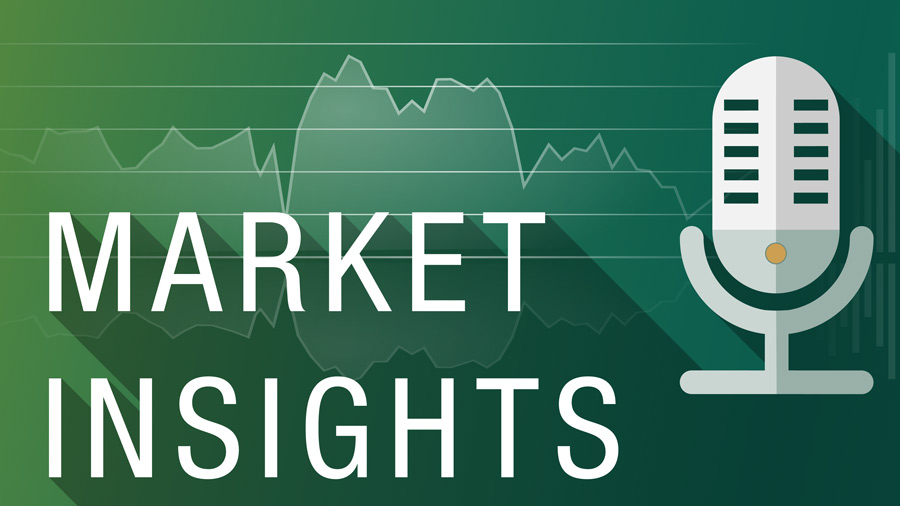Personal Wealth Management / Market Analysis
CPI’s Wobbles Are Still Noise
Up or down, CPI wiggles mean little.
Stocks don’t follow laws of physics, but Newton’s Third Law of Motion seemed to make a cameo Wednesday. Last month, you might recall, the S&P 500 fell more than -1.0% intraday when the March Consumer Price Index (CPI) report showed a small uptick in headline inflation.[i] Today, we saw the equal and opposite: an intraday jump just over 1.0% to new all-time highs on the heels of a small inflation downtick.[ii] We think it is all meaningless sentiment wiggles. Investors should consider it all noise.
Just as we didn’t see anything earthshattering in March’s small acceleration, we don’t see much of note in April’s slight easing. Headline CPI ticked down from 3.5% y/y to 3.4%, while core CPI (ex. food and energy) slowed from 3.8% to 3.6%.[iii] Rising gas prices were the main culprit for headline inflation’s smaller move, while core goods’ deflation deepened. Services inflation remains higher, easing from 5.4% y/y to 5.3%, with high fuel prices raising transit costs while shelter (and the dastardly owner’s equivalent rent component, an imaginary expense) slowed a smidge.[iv]
Basically, a bunch of small moves in both directions evened out to inflation slowing by one tenth of a percentage point. That is it! Yet headlines treat this as if it is more significant than headline CPI slowing from 3.7% y/y last September to 3.2% in October.[v] Or from 3.4% y/y last December to 3.1% in January.[vi] The purported rationale: Improvement effectively rules out another rate hike and perhaps means investors won’t have to wait long for a cut.
But we see no logic there. If larger moves to lower levels didn’t make the Fed in a hurry to cut, then why would this wee drop? Especially when the Fed has already seen CPI reaccelerate for a spell? And when it is still above its most recent low, June 2023’s 3.0%? And—most importantly—when the Fed doesn’t even target CPI? Its preferred gauge is the headline Personal Consumption Expenditures price index, which so far hasn’t reaccelerated as much as CPI. It has also been below 3.0% since last October.[vii]
In our view, nothing in April’s CPI report makes a Fed cut more or less likely. One month’s inflation report doesn’t predict the next. If a single downtick actually makes Fed policymakers confident that the inflation bulge is well and truly behind us, then we need new Fed policymakers. Can we suggest a criterion? People who will look at what actually matters to prices—namely, money supply, which still looks quite disinflationary and did throughout the spring’s CPI wobbles.
Other camps argue markets responded so positively because—in conjunction with flat April retail sales and slightly cooler hiring last month—the inflation report supports the “soft landing” scenario. This seems like a rather strange reason to be bullish. Any “landing,” hard or soft, implies an economy in the doldrums. If not crashing, then going nowhere fast. Both scenarios would be a weaker outcome than most folks currently expect. Stocks usually don’t like such disappointment.
Ok, maybe we are being too literal. Maybe it is more that people see economic growth slowing a bit and therefore putting less pressure on prices. But we think this stance misses the mark, too. Economic growth rates don’t correlate one-to-one with inflation rates. If they did, stagflation would never have been a thing. Those who see a link think only in demand terms—faster growth means more buying, pushing up prices. Yet growth is increasingly coming from business investment, which is more about increasing the supply of goods and services for sale. That is likely more disinflationary than inflationary.
Therefore, we can see a scenario where the economy grows faster than people expect as more businesses go on offense. Alongside weaker money supply growth, we would no longer have too much money chasing too few goods and services. Instead, we would have a reasonable amount of money chasing more abundant goods and services.
We think this is where continued disinflation will come from. Not from high rates, which haven’t curbed output or demand noticeably thus far. Not from slowing wage growth, which lags inflation. Not from slowing economic growth. But from the simple, timeless things everyone forgot, which gives them fresh surprise power.
If you would like to contact the editors responsible for this article, please message MarketMinder directly.
*The content contained in this article represents only the opinions and viewpoints of the Fisher Investments editorial staff.
Get a weekly roundup of our market insights
Sign up for our weekly e-mail newsletter.

You Imagine Your Future. We Help You Get There.
Are you ready to start your journey to a better financial future?

Where Might the Market Go Next?
Confidently tackle the market’s ups and downs with independent research and analysis that tells you where we think stocks are headed—and why.





